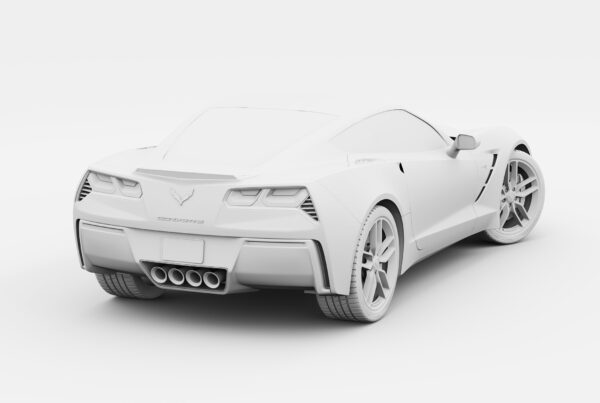The Secret Weapon for Selling Modular Products
Imagine browsing an online store and being able to not only choose a product but to virtually build it piece by piece. You select the color, adjust the size, swap out components, and watch as the product evolves before your eyes in stunning detail. This isn’t a dream of future technology—it’s the present of 3D visualization in e-commerce. And it’s revolutionizing the way businesses sell modular products.
For many online retailers, this shift to interactive 3D models and real-time product customization is the key to engaging today’s digitally-savvy consumers. Businesses that recognize this opportunity are taking the lead, leveraging 3D visualization to make their sales process not only more effective but also more exciting for customers.
Bringing Products to Life with Real-Time 3D
It’s no longer enough to offer a static image of a product from a few angles. Consumers want to interact, they want to be a part of the design process, and 3D visualization allows them to do exactly that. Imagine a customer browsing your e-commerce site, considering a new couch for their living room. Instead of flicking through flat images, they can rotate the couch in 3D, change the upholstery, swap the legs for a different style, and see how it would look under different lighting conditions—all from the comfort of their home.
This level of immersion offers a level of assurance that static images can’t provide. It empowers the customer, making them feel like they’re in control of their purchase. By seeing exactly what they’re getting, they’re far less likely to hesitate, abandon their cart, or second-guess their decision. The result? A sale that feels personal, informed, and satisfying.
The Customer Experience Revolution
The rise of 3D configurators isn’t just about making products look cool—it’s about fundamentally improving the customer experience. We’ve all been there: browsing through endless product options, trying to visualize how different configurations will come together, unsure of whether we’re making the right choice. But with real-time 3D configurators, that guesswork disappears.
When customers can see their choices reflected instantly, whether it’s the shade of a car interior or the finish on a kitchen countertop, they feel more engaged. They become co-creators in the process. The smooth, intuitive design of these tools ensures that customers aren’t overwhelmed by choices but rather guided effortlessly through the process of building their ideal product.
In today’s competitive e-commerce world, user experience (UX) has become the battleground for winning and keeping customers. The companies that nail this interactive, enjoyable UX are the ones that see not just more sales, but happier, more loyal customers.
Streamlining Sales with CPQ Systems
Of course, while 3D visualization is what your customers see, there’s a lot happening behind the scenes to make it all possible. For businesses that offer modular products—think furniture, cars, or even industrial equipment—keeping track of all the potential combinations can be a logistical nightmare. That’s where CPQ systems come into play.
Configure, Price, Quote (CPQ) software simplifies the process of offering customizable products by automating everything from the product configuration to real-time pricing. As your customer builds their dream product with the 3D configurator, the CPQ system works in the background, calculating the price of each choice and ensuring that the chosen configuration is even possible.
The beauty of a well-integrated CPQ system is that it removes the complexity for both you and your customer. Customers get instant, accurate pricing—no waiting for a sales rep to send a quote—and businesses can handle more complex orders without the risk of manual errors or delays. It’s the kind of seamless experience that makes customers come back again and again.

The Rapid Evolution of Web-Based 3D and AI Integration
As technology evolves, so do the possibilities for 3D visualization in e-commerce. With the introduction of WebGPU—the new standard for rendering complex 3D graphics directly in the browser—web-based 3D is becoming faster, more realistic, and accessible across a wide range of devices.
Staffan Hagberg, CMO of Animech, sees immense potential in this development.
“The evolution of web-based 3D will accelerate at an incredible pace. We will soon enter a phase where tools like WebGPU will enable rendering near-photorealistic experiences directly in the browser, without the need for high-end hardware. Even more exciting will be how AI will streamline this process, optimizing everything from 3D model delivery to automating product data, allowing us to deliver cutting-edge web experiences more efficiently than ever before.”
This combination of advanced 3D technology and AI is unlocking new frontiers for e-commerce. From reducing the load times of complex models to personalizing the customer journey with intelligent recommendations, AI is becoming a key player in ensuring businesses can keep up with the demands of modern consumers.
How AI Can Optimize 3D Models and Product Data
Artificial Intelligence (AI) is no longer just a buzzword in tech—it’s becoming a critical tool for businesses that want to stay ahead in the game. When it comes to managing 3D models and product data, AI can be a game changer.
Think about the process of preparing a 3D model for use in an e-commerce setting. Traditionally, this requires manual optimization to ensure that the model is lightweight enough to load quickly on a customer’s device, but detailed enough to showcase the product accurately. AI tools can now automatically optimize 3D files, analyzing the geometry and textures, and reducing file sizes without sacrificing quality. This ensures that even the most complex models load quickly, whether your customer is on a high-powered desktop or a mobile device.
And that’s just the beginning. AI can also help ensure that product data is accurate and up-to-date across all platforms. For businesses that rely on CAD models to generate 3D representations of their products, keeping track of thousands of different configurations can be overwhelming. AI can automate the process of updating product data when new components or materials are introduced, ensuring that what customers see in the 3D configurator is always correct and available for purchase.
AI can even assist in ensuring the product logic aligns perfectly with what the customer is trying to achieve. By analyzing previous configurations, AI tools can suggest the most popular or compatible options to customers, making the buying process smoother and faster.

Managing Your Data: From CAD to Product Logic
Behind every great 3D configurator is a whole lot of data. If you’re selling customizable products, you need to manage not just the visual aspect, but also the underlying logic that dictates what combinations are possible. This is where things can get tricky.
Many businesses rely on CAD (Computer-Aided Design) models to represent their products in 3D. These models are then connected to a set of product rules—often complex, especially for modular products—that determine how different components can be combined. Getting all of this to work smoothly with your CPQ system is essential if you want your 3D configurator to function properly.
With AI stepping into the picture, these complex tasks are being streamlined like never before. AI-powered systems can interpret CAD data and product logic to ensure that the configurations offered in the 3D configurator are not only visually accurate but also feasible from a production and pricing standpoint. This reduces the time and resources spent on managing vast databases of product rules, ensuring that your 3D visualization stays in sync with your real-world production capabilities.
Partner in 3D Success: Animech
Implementing a 3D configurator and CPQ system can feel like a monumental task, but it’s far from impossible—especially when you have the right partner. At Animech, we help companies navigate the complexities of 3D visualization, from the first concept sketch all the way through to aftersales services like spare parts and exploded views.
We’re not just about creating photorealistic 3D models, though we do that too. Our focus is on the entire product lifecycle. By reusing the same 3D models across different stages—whether it’s marketing, sales, or aftersales—you save time and money while maintaining a consistent brand experience.
Our team works with you to integrate CPQ systems that perfectly match your product logic, ensuring a smooth, scalable solution that grows with your business. And because we’re with you every step of the way, you’ll have peace of mind knowing that your 3D journey is in capable hands.

Looking Ahead: The Future of 3D and AI in E-Commerce
There’s no denying that 3D visualization is here to stay. In fact, it’s becoming the standard for online shopping experiences, particularly for modular and customizable products. The fusion of AI and 3D visualization offers the most exciting opportunities, from optimizing product data to delivering real-time, hyper-personalized shopping experiences.
For businesses, the key to success will be staying ahead of the curve. Those that embrace real-time 3D visualization, AI-driven optimizations, and seamless CPQ systems now will be well-positioned to lead the market in the years to come.
It’s not just about offering a cool feature on your website—it’s about delivering a customer experience that feels personal, intuitive, and engaging. In a world where consumers have endless options, the brands that make the shopping experience feel effortless and enjoyable will be the ones that win.











